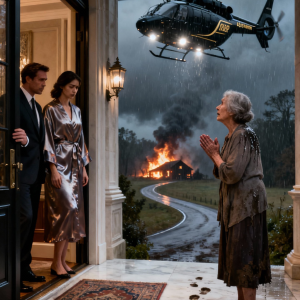
What was supposed to be an uneventful patrol in the quiet suburbs of Hawthorne Ridge, Minnesota, turned into a life-or-death mission all because of the unshakable instincts of a devoted police dog.
Officer Daniel Hargrave and his K9 partner, Ranger, had been making their way through a residential route just after dawn. The streets were calm, the air carrying the faint scent of freshly cut grass mixed with the mechanical rumble of a passing garbage truck on its regular morning rounds. It was the sort of shift most officers hope for — steady, predictable, and quiet.
But Ranger suddenly froze mid-step. The usually composed German Shepherd stiffened, hackles raised, ears pricked forward. Without warning, he began pulling hard on the leash toward the moving truck, barking in short, urgent bursts.
At first, Officer Hargrave assumed the dog had picked up the scent of discarded food or perhaps an animal rummaging through trash. But the tone of Ranger’s bark was different — sharp, insistent, almost frantic. Hargrave had worked with the dog for three years, and he knew this was no false alarm.
“Hold up!” Hargrave shouted toward the sanitation crew as he jogged forward, the dog straining against him. The workers stopped the truck, puzzled, and one of them, Luis Romero, climbed down from the cab.

“Something in there?” Romero asked, glancing toward the open back of the truck.
Ranger wasn’t just looking — he was pulling, whining now, circling near the compactor as if desperate to get inside. Trusting his partner’s instincts, Hargrave and Romero climbed up to scan the heap of refuse. That’s when a sound slipped through the layers of muffled noise — faint, rhythmic, and heartbreakingly human.
It was a cry. Weak, but unmistakable.
“Stop everything!” Hargrave called out, his voice sharp with urgency. The crew immediately killed the machinery. The smell of garbage and diesel hung heavy in the air as the men began pulling apart the compacted bags and debris, working quickly but carefully.
Within minutes, they uncovered a small bundle — a thin, faded blanket wrapped loosely around something far too delicate for such surroundings. Hargrave’s heart lurched as he peeled back the fabric.
Inside was a newborn.
The infant’s skin was pale and cool to the touch, lips tinged a worrying shade of blue. Its tiny chest rose and fell with shallow breaths, the cry barely more than a whimper. The sight hit Hargrave like a punch — the sheer fragility of life, hanging by a thread in a place no living being should ever be.
“Call it in!” Hargrave barked, already checking for a pulse. One of the workers fumbled for his phone, relaying the situation to dispatch. The ambulance’s siren could be heard in the distance within moments.
Paramedics arrived swiftly, taking the newborn into their care. They worked with practiced speed — warming the baby, checking vital signs, starting oxygen. Hargrave stood nearby, Ranger pressed against his leg, as the medical team loaded the infant into the ambulance.

By the time the baby reached St. Jude’s Medical Center, doctors confirmed that it was only hours old. Hypothermic and weak, yes, but alive — and with proper care, expected to make a full recovery.
The Hawthorne Ridge Police Department later confirmed that an investigation was underway to identify who had abandoned the child. Detectives were combing through surveillance footage from nearby streets, and social services had been alerted.
News of the rescue spread quickly through the community. People were horrified by the circumstances, yet deeply moved by the fact that the newborn had been found in time. Messages poured into the police department — letters, emails, even hand-delivered thank-you cards. Many of them singled out Ranger, hailing him as the day’s true hero.
Police Chief Monica Ellsworth addressed the media the next morning. “Ranger’s training saved a life yesterday. Without his reaction, we would be telling a very different story right now. This is a reminder that our K9 partners are not just tools — they are officers in every sense, with instincts that can see and sense what we cannot.”
Local businesses offered donations to the department’s K9 program. Children drew pictures of police dogs and sent them to the station. A bakery down the street from headquarters dropped off trays of treats — including a batch of peanut butter biscuits labeled For Ranger.
Officer Hargrave remained humble in the face of the praise. “I just listened to my partner,” he told reporters. “He knew something was wrong before I did. That’s what makes these dogs so special — they trust their instincts, and we trust them.”

In the days following, the incident sparked conversations about both the importance of funding K9 units and the heartbreaking realities of infant abandonment. Community groups began discussing better outreach and resources for struggling parents, determined to prevent tragedies before they happen.
As for Ranger, he has returned to his regular patrol duties, though those who know him say he now receives a little extra affection — and more than a few extra treats — from nearly everyone he meets.
What began as a quiet, routine morning in Hawthorne Ridge will be remembered for years as the day a police dog’s unwavering instinct and a team’s swift action turned what could have been an unthinkable loss into a story of survival, compassion, and hope.
And at the center of it all was Ranger — a silent guardian whose nose, ears, and loyal heart made the difference when it mattered most.





